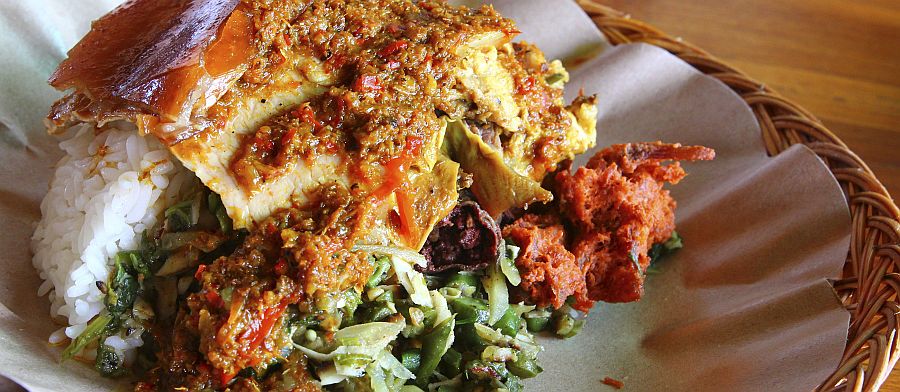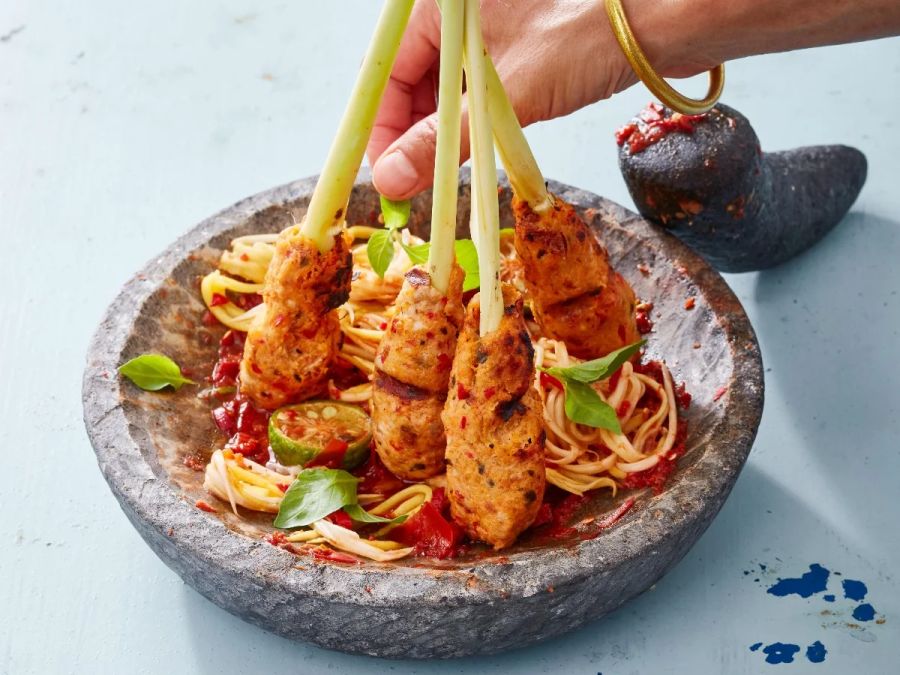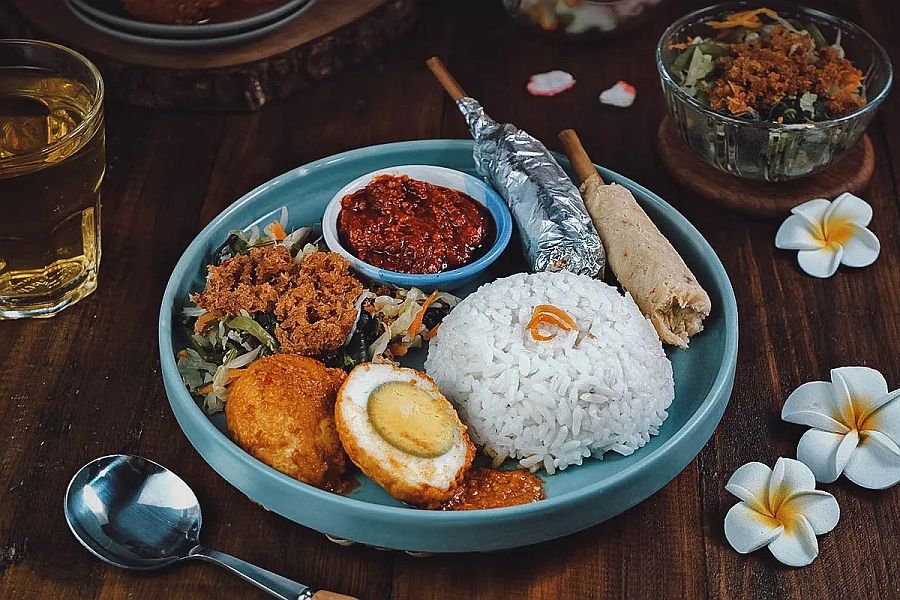Balinese Cuisine: A Journey of Flavors
Welcome to the world of Balinese cuisine, a culinary adventure that's as vibrant and diverse as the island itself. Whether you're a foodie looking to explore new flavors or a traveler eager to immerse yourself in local culture, Balinese cuisine is a journey you won't want to miss.
Overview of Balinese Cuisine
Balinese cuisine is a symphony of flavors, influenced by Indonesian, Chinese, and Indian culinary traditions. It's all about fresh ingredients, bold spices, and traditional cooking methods that have been passed down through generations. From the humble street food stalls to the elegant restaurants, every dish tells a story of the island's rich heritage.
Importance of Balinese Cuisine
Food is more than just sustenance in Bali; it's a cultural cornerstone. Balinese cuisine plays a crucial role in local festivals and ceremonies, with dishes like Babi Guling (suckling pig) being central to many celebrations. As the island's culinary scene gains global recognition, it's not just about the taste—it's about the experience, the history, and the people behind the dishes.

Essential Ingredients in Balinese Cuisine
Spices and Herbs
The heart of Balinese cuisine lies in its spices and herbs. Common spices include turmeric, ginger, galangal, and lemongrass, each adding a unique layer of flavor to the dishes. Essential herbs like kaffir lime leaves, basil, and coriander bring a fresh, aromatic touch that's distinctly Balinese.
Fresh Produce
Freshness is key in Balinese cuisine. Vegetables and fruits are often sourced locally, ensuring they're at their peak when used in dishes. Coconut milk and palm sugar are staples, adding creaminess and sweetness to a variety of recipes.
Popular Balinese Dishes
Main Courses
When it comes to Balinese cuisine, the main courses are where the magic happens. Let's dive into some of the most iconic dishes that you simply can't miss.
Nasi Campur
Nasi Campur, which translates to “mixed rice,” is a staple in Balinese cuisine. It's a delightful medley of rice served with an array of side dishes. Think of it as a culinary adventure on a single plate. You might find anything from grilled chicken and fried tofu to steamed vegetables and spicy sambal. Each bite is a surprise, and every combination is a delight.
Babi Guling
If there's one dish that epitomizes Balinese cuisine, it's Babi Guling. This ceremonial dish is a whole suckling pig, slow-roasted to perfection. The crispy skin and tender meat are seasoned with a blend of spices that will make your taste buds dance. It's not just a meal; it's an experience.
Sate Lilit
Sate Lilit is another must-try in Balinese cuisine. These minced fish satays are wrapped around lemongrass sticks and grilled to perfection. The combination of fresh fish, aromatic spices, and the subtle flavor of lemongrass is a match made in heaven.

Side Dishes and Snacks
While the main courses are the stars of the show, the side dishes and snacks in Balinese cuisine are equally delightful. Here are a few you shouldn't miss.
Lawar
Lawar is a mixed vegetable dish that's a staple in Balinese cuisine. It's made with a blend of vegetables, coconut, and spices. The result is a flavorful, textured dish that pairs perfectly with rice or as a side to your main course.
Urab
Urab is another vegetable-based dish that's a favorite in Balinese cuisine. Steamed vegetables are mixed with grated coconut and seasoned with spices. It's a simple yet delicious dish that showcases the freshness of the ingredients.
Jaje Laklak
For those with a sweet tooth, Jaje Laklak is a treat you won't want to miss. These Balinese pancakes are made with rice flour and coconut milk, then topped with palm sugar syrup. They're the perfect way to end a meal or enjoy as a snack.
Cooking Techniques and Methods
Traditional Cooking Methods
Balinese cuisine is steeped in tradition, and that includes the cooking methods. Here are some of the techniques that have been passed down through generations.
Clay Pots and Bamboo Steamers
In Balinese cuisine, clay pots and bamboo steamers are often used to cook food. These traditional tools help to retain the natural flavors and nutrients of the ingredients. The slow cooking process allows the spices to meld together, creating rich, complex flavors.
Slow Cooking and Grilling
Slow cooking and grilling are also common in Balinese cuisine. Dishes like Babi Guling are slow-roasted over an open fire, while Sate Lilit is grilled to perfection. These methods not only enhance the flavors but also add a smoky depth that's characteristic of Balinese dishes.
Modern Adaptations
While traditional methods are still widely used, Balinese cuisine has also evolved to incorporate modern techniques.
Modern Kitchen Tools
Modern kitchen tools like pressure cookers and electric grills are now used in many Balinese kitchens. These tools help to speed up the cooking process without compromising on flavor.
Fusion of Traditional and Contemporary
There's also a growing trend of fusion cuisine in Bali. Chefs are blending traditional Balinese recipes with contemporary cooking styles, creating innovative dishes that are both familiar and exciting.

Where to Experience Balinese Cuisine
Local Markets and Street Food
One of the best ways to experience Balinese cuisine is by exploring the local markets and street food stalls. Here are some must-visit spots.
Ubud Market
The Ubud Market is a treasure trove of Balinese delights. From fresh produce to ready-to-eat dishes, you'll find a wide variety of options. Don't miss the chance to try some street food classics like Nasi Campur and Sate Lilit.
Gianyar Night Market
The Gianyar Night Market is another great place to sample Balinese cuisine. This bustling market comes alive at night, offering a wide range of street food. It's the perfect place to try dishes like Babi Guling and Lawar.
Restaurants and Culinary Tours
For a more refined dining experience, there are plenty of restaurants and culinary tours that showcase the best of Balinese cuisine.
Recommended Restaurants
Restaurants like Bumbu Bali and Warung Ibu Oka are renowned for their authentic Balinese dishes. These places offer a comfortable setting where you can enjoy a leisurely meal.
Culinary Tours and Cooking Classes
Culinary tours and cooking classes are a fantastic way to immerse yourself in Balinese cuisine. You'll learn about the ingredients, cooking techniques, and even get to prepare some dishes yourself. It's an experience that's both educational and delicious.
Balinese cuisine is a journey of flavors, traditions, and experiences. From the vibrant markets to the elegant restaurants, every dish tells a story of the island's rich heritage. Whether you're a foodie or a traveler, exploring Balinese cuisine is an adventure you won't want to miss. So, grab your appetite and dive into the world of Balinese flavors—you're in for a treat!
Frequently Asked Questions (FAQs)
FAQ 1: What are the key ingredients in Balinese cuisine?
Answer: Key ingredients in Balinese cuisine include spices like turmeric, ginger, and galangal, herbs like kaffir lime leaves and basil, and fresh produce like coconut milk and palm sugar.
FAQ 2: What are some popular Balinese dishes?
Answer: Popular Balinese dishes include Nasi Campur (mixed rice), Babi Guling (suckling pig), Sate Lilit (minced fish satay), Lawar (mixed vegetables), and Urab (steamed vegetables with coconut).
FAQ 3: How is Balinese cuisine different from other Indonesian cuisines?
Answer: Balinese cuisine is unique due to its blend of spices, emphasis on fresh ingredients, and traditional cooking methods. It's influenced by Indonesian, Chinese, and Indian culinary traditions, creating a distinct flavor profile.
FAQ 4: Where can I find authentic Balinese food in Bali?
Answer: Authentic Balinese food can be found in local markets like the Ubud Market and Gianyar Night Market, street food stalls, and traditional restaurants like Bumbu Bali and Warung Ibu Oka.
FAQ 5: What are some traditional cooking methods used in Balinese cuisine?
Answer: Traditional cooking methods in Balinese cuisine include the use of clay pots, bamboo steamers, slow cooking, and grilling. These methods help to retain the natural flavors and nutrients of the ingredients.
